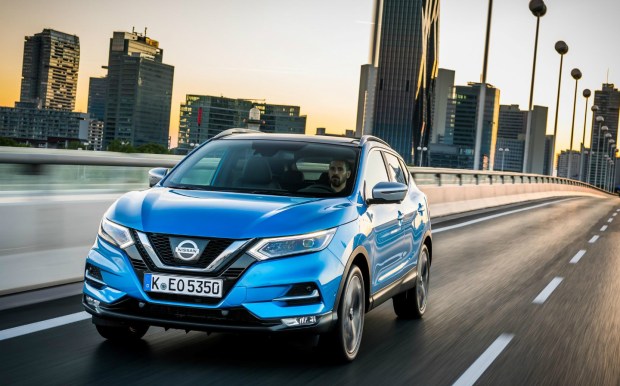About the car
The Nissan Qashqai has been the major success story and has spearheaded the rise of the crossover SUV — vehicles based on cars but with a high-riding stance and rugged looks, as opposed to proper off-roaders. Equally at home in town and country, the Qashqai’s conservatively stylish looks, sensible use of space and affordability are helping it retain its appeal, despite increasing competition from rival car makers. Handling is responsive, despite its tall silhouette, and the suspension affords a good balance of shock absorption over rough roads and controlled cornering ability. The Qashqai has redefined how people look at Sport Utility Vehicles, with a comfortable and quiet drive banishing their previously noisy and unrefined image of the past.<h3>Nissan Qashqai history</h3> <p>The Qashqai first arrived in showrooms in 2007, pioneering a new market segment: the urban crossover. Built in Sunderland, UK, demand quickly outstripped projections and that hasn’t let up since; over the last six years the plant has been working three shifts a day to keep up with orders.</p> <p>In 2008 a seven-seat version called the Qashqai+2 arrived. It was stretched by 211mm and space between the front and rear axles (wheelbase) increased by 135mm, while the roof was raised 38mm. In 2013 this model was discontinued, with the Nissan X-Trail taking its market position.</p> <p>In 2010, the Qashqai received a facelift, with electronic stability control made standard across the range, then a year later a new 1.6-litre diesel engine replaced the 2-litre dCi engine, for greater efficiency.</p> <p>Deliveries of an all-new second-generation version began in 2014 and the 500,000th Qashqai rolled off the Sunderland production line in 2015, when the n-tec trim level replaced Acenta Premium, positioned between the existing Acenta and Tekna grades.</p> <p>The Qashqai was facelifted again in 2017 with a new exterior design, updated interior, improved effiency and new technologies, with DAB digital radio becoming standard across the range. In addition, a fifth trim level — Tekna+ — was added, which sits as the flagship of the line-up above Visia, Acenta, N-Connecta and Tekna.</p> <h3>Nissan Qashqai is suitable for</h3> <ul> <li>Young families</li> <li>Those on a budget</li> <li>The practically-minded</li> <li>Those looking to buy British</li> <li>Those who prefer a high driving position</li> <li>Those needed something a little more rugged than a hatchback</li> </ul> <h3>Nissan Qashqai rivals</h3> <ul> <li>Ford Kuga</li> <li>Hyundai Tucson</li> <li>Kia Sportage</li> <li>Mazda CX-5</li> <li>Seat Ateca</li> <li>Skoda Karoq</li> <li>Toyota RAV4</li> <li>Honda CR-V</li> </ul>





